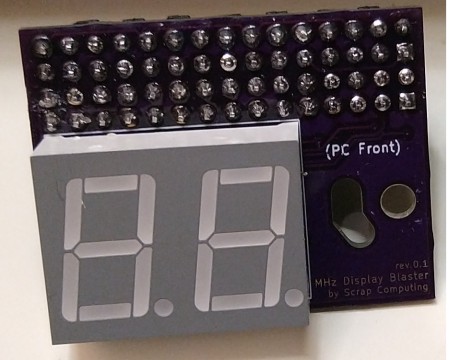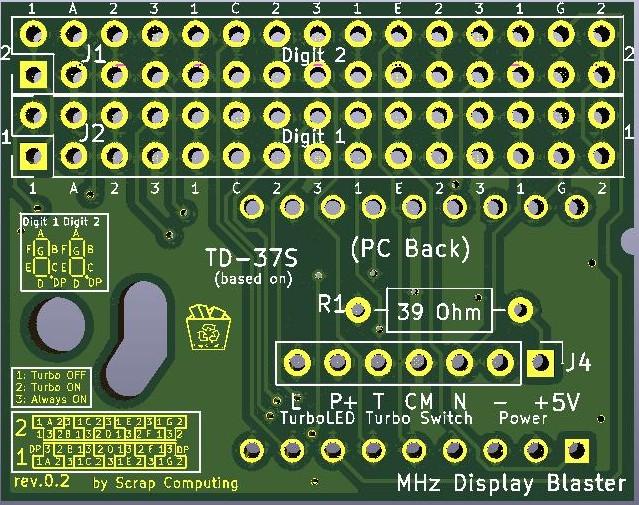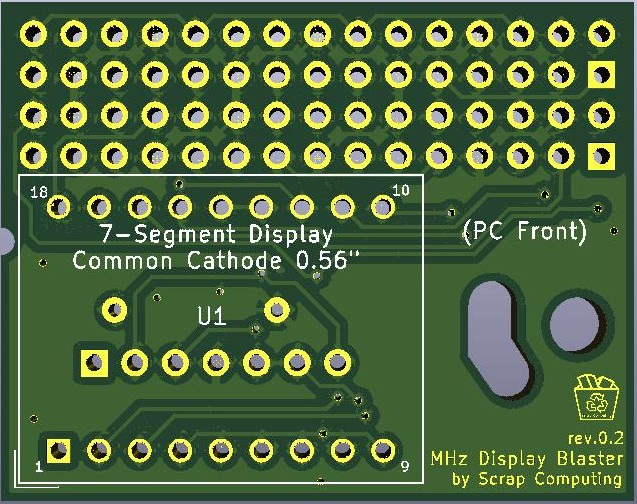A clone of the TD-37S 2-digit MHz display that was common in 386/486 PC cases. It can display a Turbo and a non-Turbo number, depending on the state of the Turbo switch. It also drives the Turbo LED accordingly.
- Video showing the assembly of rev.0.1 PCB: https://www.youtube.com/watch?v=a4iVehn7APU
Warning Please solder the single-row header and the resistor before you solder the 7-segment display
- Power: The display is powered by providing 5V to the
+pin of J4 and GND to the-pin. - Turbo Switch: The turbo switch is a 3-pin 2-way switch. Connect the common wire (middle) to
CM, the Turbo-ON wire toTand the Turbo-OFF wire toN(J4). - Turbo LED: The turbo LED is connected to
LandPon J4.Pis the positive.
- Each segment of the 7-segment display is configured individually with a jumper
- Each segment corresponds to a pin in the configuration headers
- You can short that pin with one of the neighboring state pins (forming a
Tshape) to set its state, which can be one of the following:- ON when Turbo switch is OFF (jumper to position 1)
- ON when Turbo switch is ON (jumper to position 2)
- Always ON (jumper to position 3)
- Always OFF (no jumper)
Note Please note that the PCB is often mounted up side down on the case.
- For a simple tutorial on how to set it up please refer to the video: https://www.youtube.com/watch?v=wNkg-e47Ex8
- More resources on MHz Displays
Gerber files are published in the releases: https://github.com/scrapcomputing/MHzDisplayBlaster/releases
| Reference | Quantity | Value | Footprint/Comments |
|---|---|---|---|
| U1 | 1 | (e.g., LTD-6440G) | 18-DIP (0.600", 15.24mm distance between top and bottom row pins) 2-Digit 7-Segment Display Common Cathode 0.56" Green |
| J1 J2 | 2 | Conn_02x15 | Connector Male PinHeader 2x15 P2.54mm Vertical |
| J4 | 1 | Conn_01x06 | Connector Male PinHeader 1x06 P2.54mm Vertical |
| Jumpers | 15 | 2.54mm pitch jumpers |
- Rev.0.2 : Fixes polarity issue, improves info
- Rev.0.1 : Initial revision



